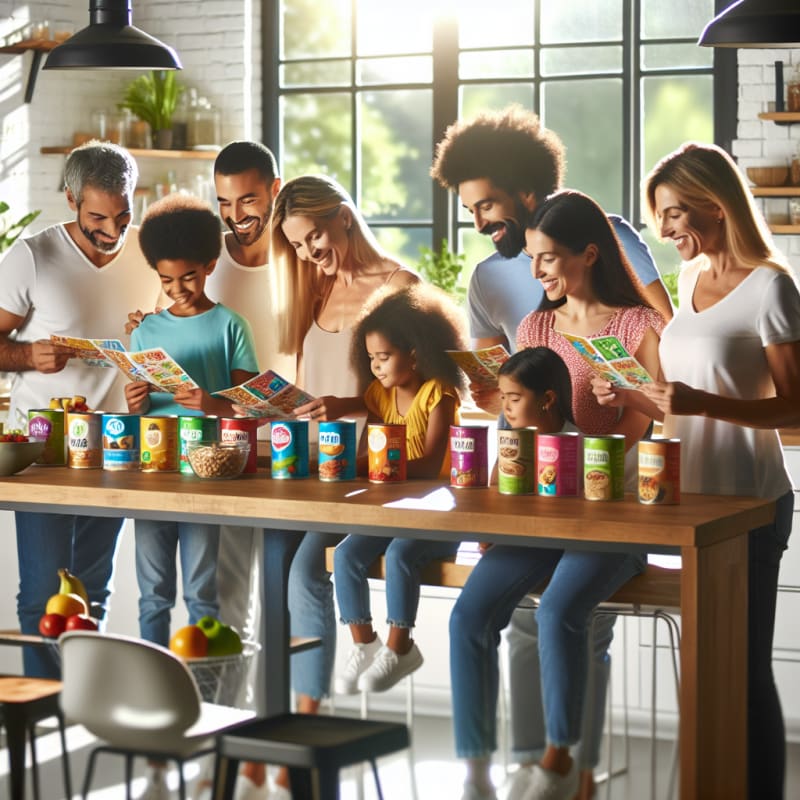How To Know If Food Contains E Numbers?
By The Generic Scanners Editorial Team | Updated June 2024
One evening, Maria, a mother of two, prepared a quick pasta dinner for her family. Minutes after eating, her youngest began to itch and complain of a stomach ache. Maria suspected an ingredient in the sauce, but the label was a maze of unfamiliar codes and additives. She wondered: How do you really know if food contains E numbers—and what do they mean?
If you’ve ever faced a similar dilemma, you’re not alone. Understanding food labels, especially when it comes to E numbers, is crucial for anyone concerned about food additives, allergies, or dietary restrictions.
What Are E Numbers?
E numbers are codes for substances used as food additives within the European Union (EU) and, increasingly, worldwide. Each E number corresponds to a specific additive, such as preservatives, colorants, or emulsifiers. For example:
- E100 – Curcumin (a natural colorant)
- E202 – Potassium sorbate (a preservative)
- E621 – Monosodium glutamate (MSG, a flavor enhancer)
Why do E numbers matter? Some people are sensitive to certain additives, and others wish to avoid them for health, ethical, or religious reasons. The European Food Safety Authority (EFSA) and the U.S. Food and Drug Administration (FDA) regulate these additives for safety, but labeling laws and transparency vary by region.1
How To Know If Food Contains E Numbers?
The simplest way to know if a food contains E numbers is to read the ingredient list on the packaging. However, the process isn’t always straightforward, especially when shopping internationally or for imported products. Here’s how to decode them:
- Look for “E” codes: In the EU, additives are often listed as “E” followed by a number (e.g., E330 for citric acid).
- Check for additive names: In the US, the same substances may be listed by their chemical names instead of E numbers (e.g., “citric acid” instead of “E330”).
- Use a scanner app: Apps like Food Scan Genius let you scan barcodes and instantly see if a product contains E numbers or other additives.
Table 1: Common E Numbers and Their Functions
| E Number | Name | Function | US Labeling |
|---|---|---|---|
| E100 | Curcumin | Colorant | Curcumin, Turmeric Extract |
| E202 | Potassium Sorbate | Preservative | Potassium Sorbate |
| E621 | Monosodium Glutamate | Flavor Enhancer | Monosodium Glutamate, MSG |
| E951 | Aspartame | Sweetener | Aspartame |
Ingredient Labeling Laws: US vs EU
Understanding ingredient lists is easier when you know the regional rules. Here’s a comparison of how E numbers and additives are disclosed:
| Aspect | United States (FDA) | European Union (EFSA) |
|---|---|---|
| Labeling of Additives |
Additives must be listed by name (e.g., “sodium benzoate”), not by E number. Source: FDA |
Additives can be listed as “E” numbers or by name (e.g., “E202” or “potassium sorbate”). Source: EFSA |
| Allergen Disclosure |
Major allergens must be clearly listed. Source: FDA |
Allergens must be emphasized (e.g., bold font) in the ingredients list. Source: Food Standards Agency |
| Transparency | Some additives may be grouped as “artificial flavors” or “colors.” | Full disclosure of E numbers is required. |
Key takeaway: If you’re in the EU, look for “E” codes. In the US, check for additive names. For imported foods, both may appear.
Why Should You Care About E Numbers?
While most E numbers are considered safe in regulated quantities, some people may have sensitivities or health concerns. For example, artificial colors (like E102, tartrazine) have been linked to hyperactivity in children, according to a 2023 PubMed study.2
- Allergies: Certain E numbers can trigger allergic reactions or intolerances.
- Dietary Preferences: Vegans, vegetarians, and those with religious dietary laws may need to avoid specific additives.
- Health Concerns: Some additives are controversial or have usage limits (e.g., aspartame/E951 and phenylketonuria).
Recent news from BBC Health and The New York Times highlights growing consumer demand for clearer labeling and additive transparency.
How To Identify E Numbers Quickly: The Food Scan Genius App
Manually reading every ingredient list can be overwhelming—especially if you’re shopping with kids or managing a health condition. That’s where technology like Food Scan Genius comes in.
- Scan any barcode: Instantly see if a product contains E numbers, allergens, or unwanted additives.
- Personalized alerts: Set dietary preferences (e.g., “no artificial colors” or “vegan only”) and get instant feedback.
- Global database: Works for products from the US, EU, and beyond—perfect for travelers or families with international backgrounds.
“My son has a sensitivity to certain food dyes. With Food Scan Genius, I just scan the product and know instantly if it’s safe. It’s a lifesaver for busy parents!”
— Jessica R., Boston, MA
Download Food Scan Genius to make shopping safer and easier for your family.
Frequently Asked Questions: E Numbers & Food Labels
Q: What are E numbers, and are they safe?
A: E numbers are codes for approved food additives in the EU. Most are considered safe by authorities like EFSA and FDA, but some may cause reactions in sensitive individuals.1
Q: How can I avoid E numbers if I have allergies?
A: Always check the ingredient list. In the EU, look for “E” codes; in the US, look for additive names. Use apps like Food Scan Genius for instant detection.
Q: Are E numbers always artificial chemicals?
A: No. Many E numbers are natural substances (e.g., E300 is vitamin C). Others are synthetic or processed.
Q: Is there a list of all E numbers?
A: Yes. The EFSA and FDA publish comprehensive lists.
Q: Do E numbers mean a food is unhealthy?
A: Not necessarily. E numbers indicate the presence of additives, which can be natural or artificial. Moderation and awareness are key.
Conclusion: Empowering Your Food Choices
Maria’s story is a reminder that understanding food labels can protect your family’s health and well-being. Whether you’re managing allergies, dietary restrictions, or simply want to make informed choices, knowing how to know if food contains E numbers is essential.
Thanks to clear ingredient lists, updated labeling laws, and smart tools like Food Scan Genius, you can shop with confidence—no more guesswork, just peace of mind.
Take control of your food choices today: Read labels, stay informed, and scan smarter.





